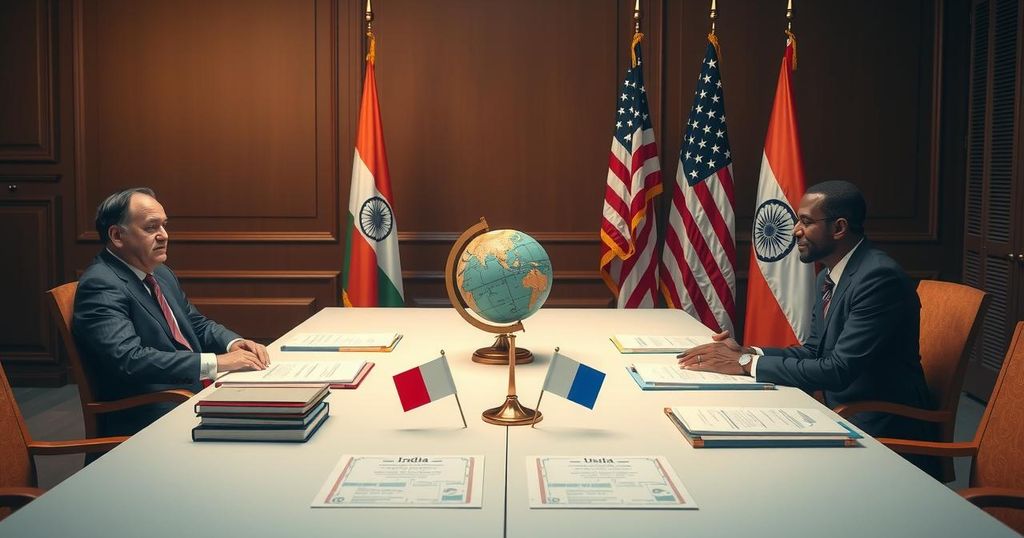India Prepares for U.S. Reciprocal Tariffs as Deadline Approaches

President Trump plans to implement reciprocal tariffs affecting all countries starting April 2, a strategy aimed at rebalancing trade. While the U.S. focuses on select nations with trade imbalances, India seeks to safeguard its interests amidst these developments. The two countries are in discussions for a bilateral trade agreement aiming for significant trade growth by 2030.
As the April 2 deadline for President Donald Trump’s reciprocal tariff strategy approaches, he announced plans to apply tariffs to all countries, not just a select few. Trump emphasized that these tariffs are essential for rebalancing global trade and boosting U.S. manufacturing, while also funding his domestic policies and tax priorities for the upcoming 2024 campaign.
Kevin Hassett, White House economic adviser, indicated that the administration’s focus would narrow to 10-15 countries with significant trade deficits, although specific nations have yet to be identified. The forthcoming tariffs, their calculation methods, and criteria for exemptions are still not publicly clarified. Trump has acknowledged non-tariff barriers in calculations but has not elaborated on specific details.
Concerns surrounding the economic implications of these tariffs are evident, with UK Secretary of State Yvette Cooper highlighting potential negative effects on the global economy. Trump’s intention to leverage tariffs aims to protect the U.S. economy from unfair competition, yet the prospect of a trade war contributes to market instability and recession fears.
India and the United States are engaging in sectoral discussions under a proposed bilateral trade agreement, scheduled to begin soon. This initiative follows four days of negotiations between high-level officials, with plans aiming to increase market access and reduce barriers. The goal is to finalize the first phase of this agreement by Fall 2025 and significantly boost bilateral trade by 2030.
The U.S. has suggested duty concessions in several sectors, including automobiles and agricultural products. In reciprocity, India is likely to pursue reductions in tariff rates for labor-intensive sectors such as textiles, addressing the complexities of their trade dynamics. Trump praised Prime Minister Narendra Modi, signaling optimism over tariff negotiations between the two nations.
Despite pressures from U.S. demands for a comprehensive trade agreement, Indian industries express apprehension regarding reciprocal tariffs that could adversely affect them due to the United States being their largest trading partner. The U.S. seeks increased access to India’s agriculture sector, though experts believe India may resist including sensitive sectors like dairy.
In 2024, India’s exports to the U.S. included pharmaceuticals, telecom instruments, and jewelry, whereas major imports comprised crude oil and diamonds. The bilateral trade volume reached approximately USD 120 billion for the FY 2023-24, with a notable surplus favoring India. Moreover, the U.S. has invested significantly in India since 2000, underscoring the longstanding economic relationship between the two nations.
As the deadline for implementation of reciprocal tariffs nears, Indian and U.S. negotiators strive to finalize a beneficial trade agreement. Trump’s strategy to impose tariffs on numerous countries aims to protect American interests, potentially destabilizing global markets. The outcomes of these negotiations may significantly influence future bilateral trade relations, particularly in sensitive sectors.
Original Source: www.livemint.com






